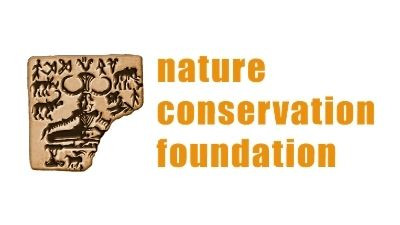Goal – ₹ 20,00,000
Amount raised so far – ₹ 48,501
About the fundraiser:
The Hornbill Nest Adoption Program (HNAP) is a community-based conservation initiative that was started in 2012 to protect hornbills and hornbill nest trees/habitat in the Papum Reserve Forest which is contiguous with Pakke Tiger Reserve in Arunachal Pradesh. The program is based on the concept of “shared parenting”: citizens adopt hornbill nests and local people employed as Nest Protectors monitor and protect hornbill nest trees to ensure successful breeding. Donors are known as ‘Hornbill Parents’. Of course, the real hornbill parents still do all the hard work and we just help them along a bit.
Hornbills are secondary cavity nesters, therefore the availability of suitable cavities for nesting can be a limiting factor for hornbill populations. Hornbill pairs invest a lot of time and effort in breeding. The female hornbill seals herself in the cavity for 3-4 months (depending on the species) while food is brought by the male. They are vulnerable to human disturbance during this time. This makes it important to monitor and protect hornbill nests during the breeding season. There are three hornbill species in the lowland forests in this area – the Great Hornbill, Wreathed Hornbill and the Oriental Pied Hornbill. A fourth species, the Rufous-necked Hornbill is rarely seen here and found in the higher elevation forests.
To ensure the protection of the three lowland hornbill species and their nest trees, the HNAP currently employs 11 Nest Protectors who belong to the local Nyishi tribe. The nest protectors locate hornbill nests in January-February and monitor them through the breeding season (March to August). They monitor hornbill roost sites and walk transects in the Reserve Forest to count hornbills and other wildlife in the non-breeding season. From 2012-2020, through the HNAP, 152 hornbill chicks have successfully fledged from their nests which includes 35 Great Hornbill, 20 Wreathed Hornbill and 97 Oriental Pied Hornbill chicks.
The Nest Protectors have been monitoring nests even during the pandemic and sharing data using an online portal. The Nest Protectors also engage with local community members to instil the message of conservation and discourage people from illegal activities. Their commitment towards hornbills is heartening. For many of them, the HNAP is the main source of income to support their families.
How funds will be utilised:
The HNAP has been running since 2012 due to the support and care of individual ‘hornbill parents’, as well as some support from several zoos abroad. We have not raised much last year and this year, we are short of funds needed to run the program. The funds raised will be used to cover all expenses for the smooth running of the program. The main costs that your contribution will support are listed below:
- Salaries of the HNAP local co-ordinator and nest protectors
- Field equipment for the nest protectors
- Medical expenses for the nest protectors
- Logistics and local travel
Adopt a nest and become a 'Hornbill Parent' now!
Impact on the ground:
- Protection of hornbills and hornbill nests
- Successful fledging of hornbill chicks
- Employment of community members
- Building a network of conservation leaders
- Monitoring of hornbill populations
Nature Conservation Foundation
At the Nature Conservation Foundation (NCF), our mission is to explore, understand, and conserve India’s wild spaces and species through research and responsible engagement with society. We believe in a world where nature and society can flourish together. Our efforts focus on trying to create models of conservation, conflict management and economic development that are respectful and inclusive of local human communities, and promote nature conservation, restoration, and sustainable development. In our conservation work, we stand for equity and inclusivity, and place high premium on responsible engagement with local people and ethical treatment of wild species. NCF’s team of scientists, conservationists, and field staff study and conserve highly endangered and charismatic species like snow leopards, hornbills, and elephants, and lesser-known ones like corals and rainforest trees. We work closely with local communities, governments, and the citizenry to better understand and conserve species and habitats. Currently, we carry out field work in eighteen states of India—from the high Himalaya to the coral islands of Lakshadweep, from the rainforests of the north-east to the montane grasslands of the Western Ghats. Complementing this are our nationwide efforts in nature education, citizen science, and outreach. Our work is rooted in long-term scientific research in ecology and society.
Gallery
An Oriental Pied Hornbill chick. Photograph: Vijay Tachang
A Wreathed Hornbill chick emerging from the nest. Photograph: Prem Tok
A female Oriental Pied Hornbill entering the nest cavity. Photograph: Sital Dako
A pair of adult Wreathed Hornbills. Photograph: Aparajita Datta
An adult male Great Hornbill perched at an active nest. Photograph: Aparajita Datta
A sealed Great Hornbill nest cavity.
Counting hornbills at a roost site. Photograph: Aparajita Datta
Nest Protector Gingma at a nesting site. Photograph: Aparajita Datta
Nest Protectors clearing a fire line around a nest tree. Photograph: Swati Sidhu
The Nest Protectors at their weekly meeting in 2021. Photograph: Tajik Tachang
The current team of Nest Protectors. Photograph: Aparajita Datta

